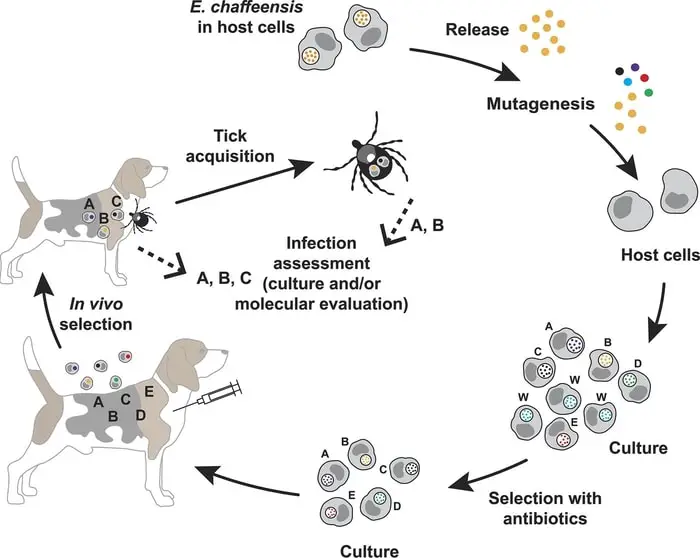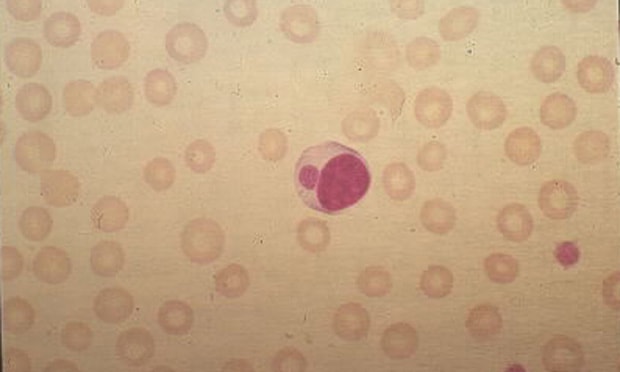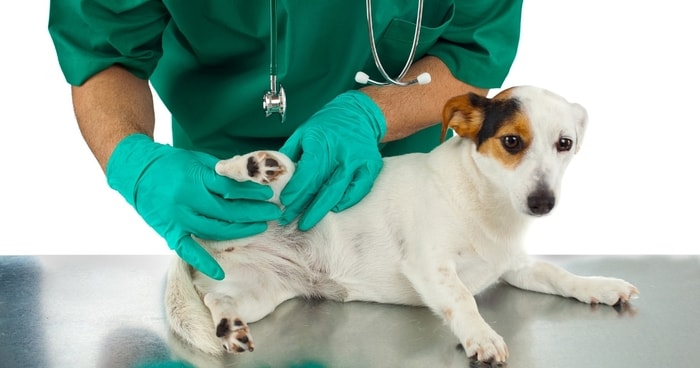Ehrlichiosis in dogs is a tick-borne systemic disease. The disease is caused by a variety of rickettsial species in the genus Ehrlichia. The disease was first identified in war dogs during the Vietnam war. The disease may be found in any dog breed but is more severe in Doberman Pinscher and German Shepherd Dogs. The disease is transmitted by the sucking of brown ticks and is endemic in southeastern and southwestern states of the United States.
Causes of Ehrlichiosis in Dogs
Several species of Ehrlichia are known to infect the dog, although E canis, the cause of canine monocytic ehrlichiosis, is the most common form of the disease in dogs. Variations of clinical diseases like granulocytic ehrlichiosis and infectious canine cyclic thrombocytopenia have been recognized.

What Are The Signs of Ehrlichiosis?
There are three phases of ehrlichial infection. They are:
- Acute- one to three weeks following the infection, clinical signs of acute-phase begin and last for two to four weeks. During the acute phase, nonspecific signs are-
- Fever.
- Oculonasal discharge.
- Anorexia
- Weight loss.
- Dyspnea.
- Lymphadenopathy.
- Subclinical signs– in this phase, there are no outward clinical signs but last up to 5 years.

- Chronic signs– a titer of 20 or greater of IgG is generally evidence of infection/exposure. On the other hand, the chronic onset of canine ehrlichiosis is a multisystemic disorder. The signs are as follows-
- Multisystemic signs– a common presentation by depression, lethargy, mild weight loss, and anorexia with or without hemorrhagic tendencies.
- Ocular signs– your dogs may show changes in eye color or may develop blindness.
- Neuromuscular signs– the signs are due to meningitis. Seizures, stupor, ataxia, acute central or peripheral vestibular dysfunction, anisocoria, cerebellar dysfunctions, intention, tremor, and generalized or localized hyperesthesia.
- Polyarthritis– your dog may develop lameness with a stiff gait.
Diagnosis of Ehrlichiosis in Dogs
Your veterinarian setting a diagnosis of ehrlichiosis is usually made based on clinical signs, hematologic abnormalities, and serology. Nonregenerative anemia and thrombocytopenia are the predominant hematological findings. Approximately one-third of affected dogs will manifest leukopenia. Pancytopenia is a less common finding that is more likely to occur in the chronic phase of the disease. Pancytopenia is reported to occur more often in German Shepherd Dogs.

Serological confirmation of ehrlichiosis is based on the results of an indirect FA test. Antibodies may be detected in serum as early as seven days after infection. However, some dogs may not seroconvert until 28 days after infection. Finally, your experts may use Western immunoblotting and PCR tests.
Differential Diagnosis of Canine Ehrlichiosis
Immune-mediated thrombocytopenia is an important differential diagnosis to consider when evaluating a patient suspected of having ehrlichiosis. Affected dogs may have concurrent immune-mediated hemolytic anemia as well. The presence of other clinical signs such as neurologic signs, peripheral limb edema, and laboratory findings such as leukopenia significantly expand the list of differential diagnoses.
Treatment of Ehrlichiosis in Dogs
Although several inexpensive drugs are available for the treatment of ehrlichiosis, the success of treatment generally depends on the state of the disease condition and the ability to treat it early in the course of infection. Doxycycline is the preferred treatment of acute infection. Alternatively, minocycline can be given for ten days with similar results expected. Your veterinarian recommended imidocarb di-propionate. Steroids may be used in several cases that are the condition of your dogs for life-threatening reasons.

In the clinical setting, it may not be easy to distinguish between immune-mediated thrombocytopenia and ehrlichiosis quickly. As a result, initial empiric therapy of thrombocytopenic dogs is justified and includes both immunosuppressive levels of prednisolone plus the administration of an appropriate antimicrobial.
Prevention of Canine Ehrlichiosis
There is currently no vaccine available for the prevention of ehrlichiosis. Prevention of tick infestation is done by using different acaricidal drugs. Preventive measures also include oral administration of tetracycline for dogs living in endemic areas.